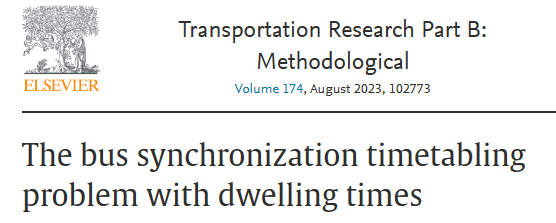Cristián E. Cortés, Cristiam Gil, Antonio Gschwender, Pablo A. Rey
Abstract
We study the bus synchronization timetabling problem (BST) including bus dwelling times, motivated by the night shift of the transit system operating in Santiago-Chile. The operation at night under a frequency-setting modality could become inefficient, as at night the frequencies must be low under this type of policy, which may result in long waiting times and poor service quality for passengers. To address these inefficiencies, the authorities have required that all of their night services will operate according to fixed timetables considering the possibility of providing coordinated transfers between certain lines to reduce waiting times in night transfers. For this purpose, we propose a mixed integer programming model to define the specific timetables and the duration of the vehicle dwelling periods, taking the line frequencies as given. The model includes all the specifications and operation details of the real system, with a special focus on the synchronization of transfers at stops, pursuing the maximization of successful encounters through the inclusion of dwelling times as optimization variables together with the departure times of each line. The model was strengthened by adding different sets of valid inequalities. The performance is analysed in a real case study of 94 lines comprising 48 services and 14 transfer zones, showing an increase of around 73% in the number of encounters of the most flexible model with respect to the base case operation.
